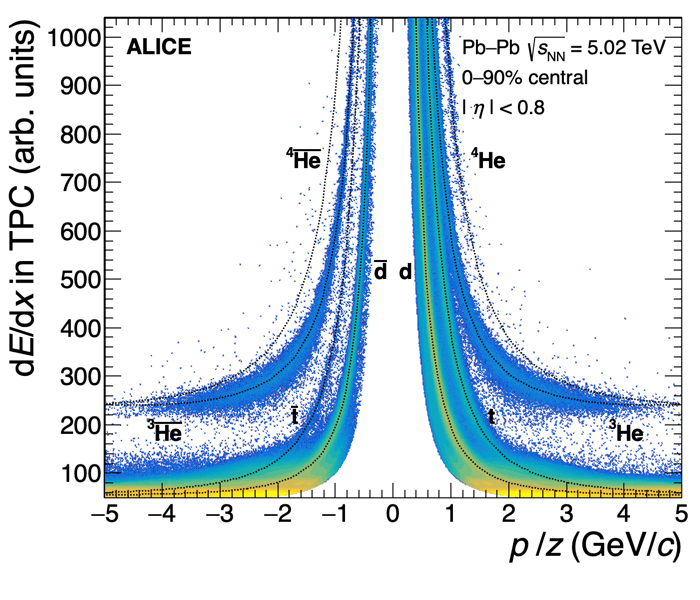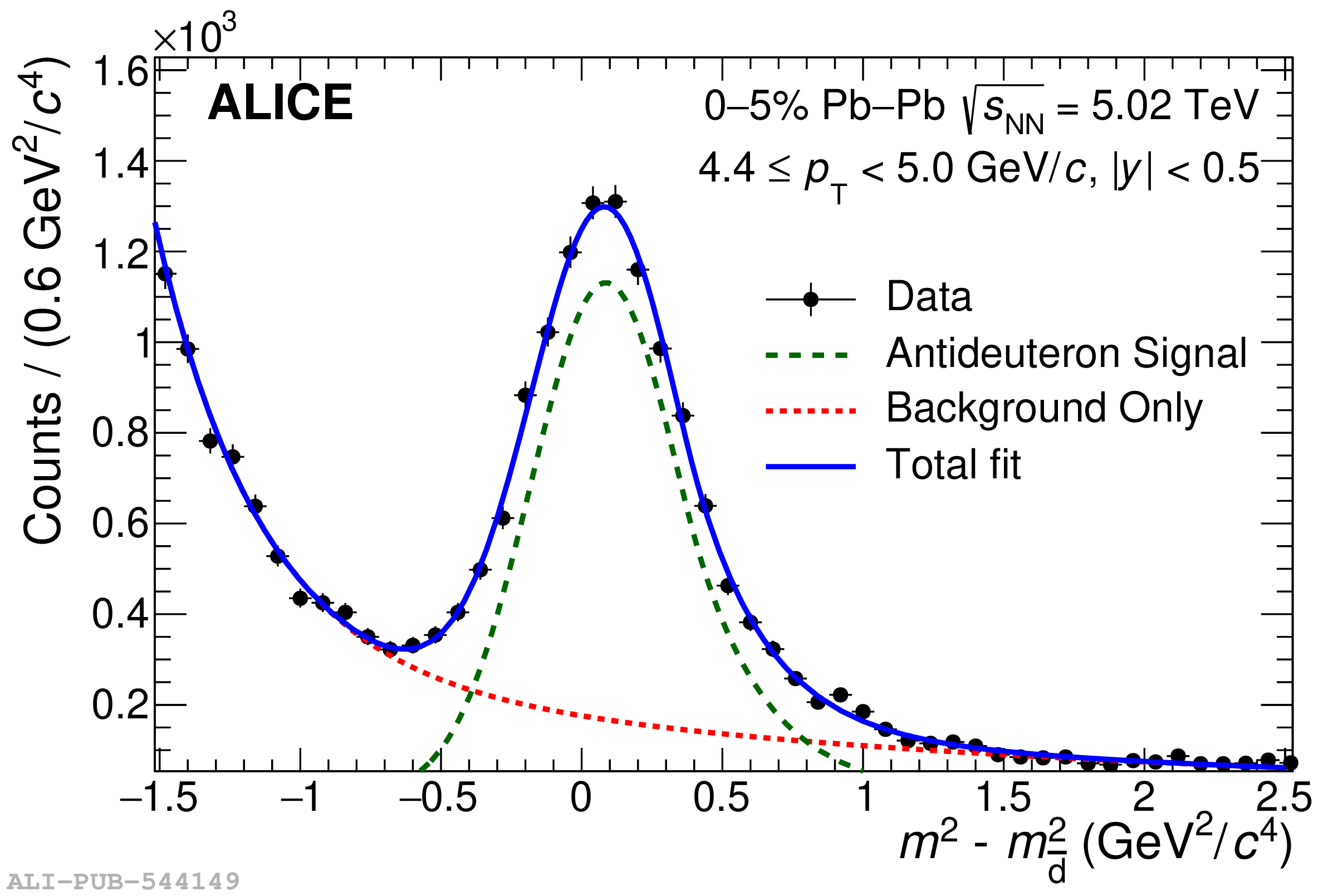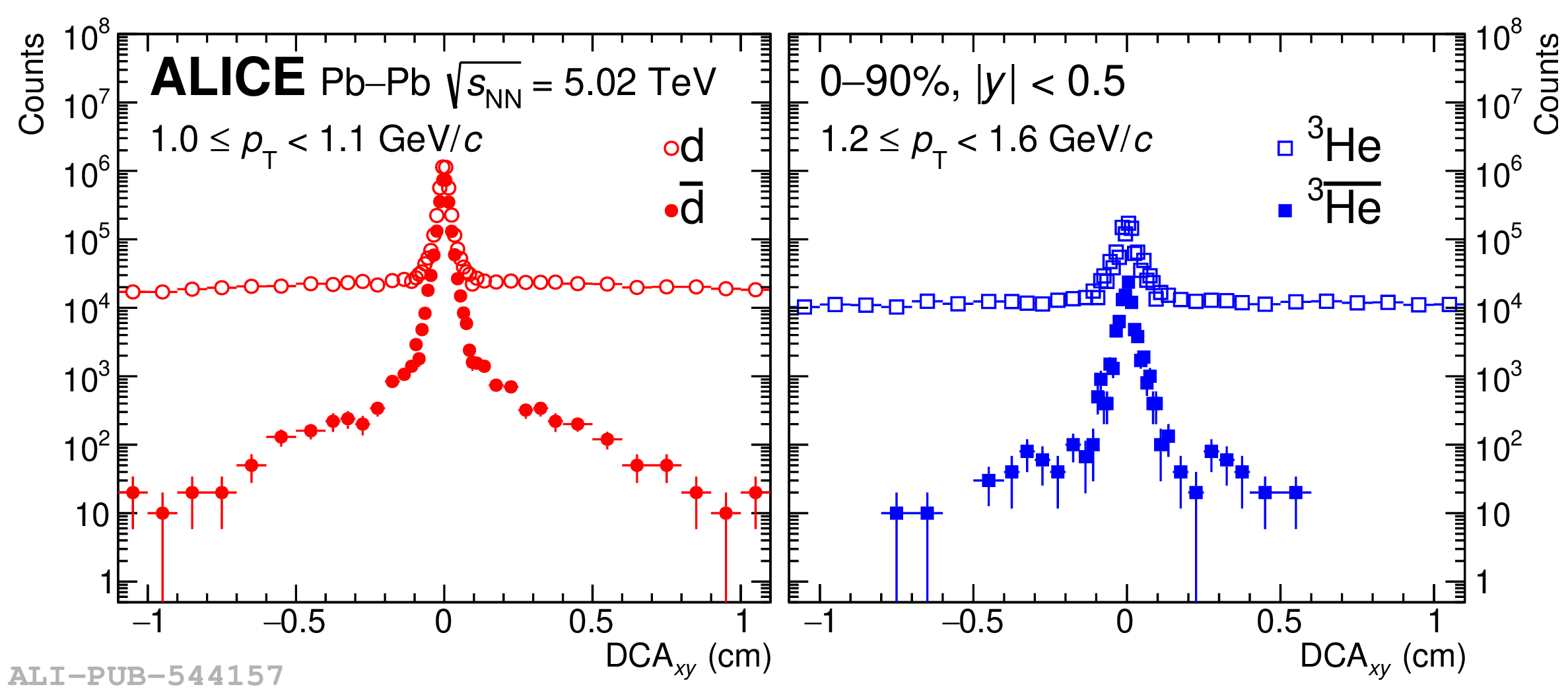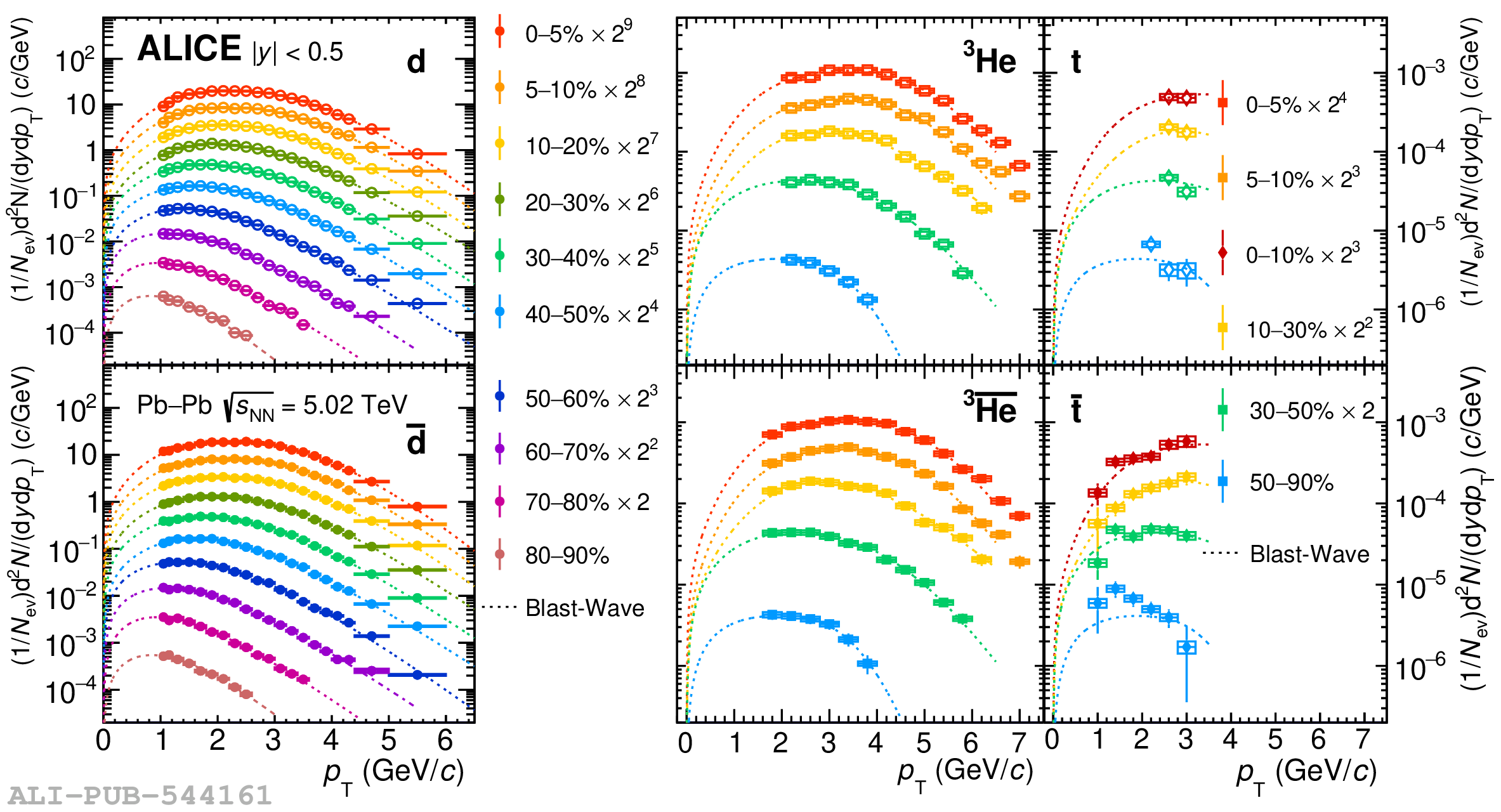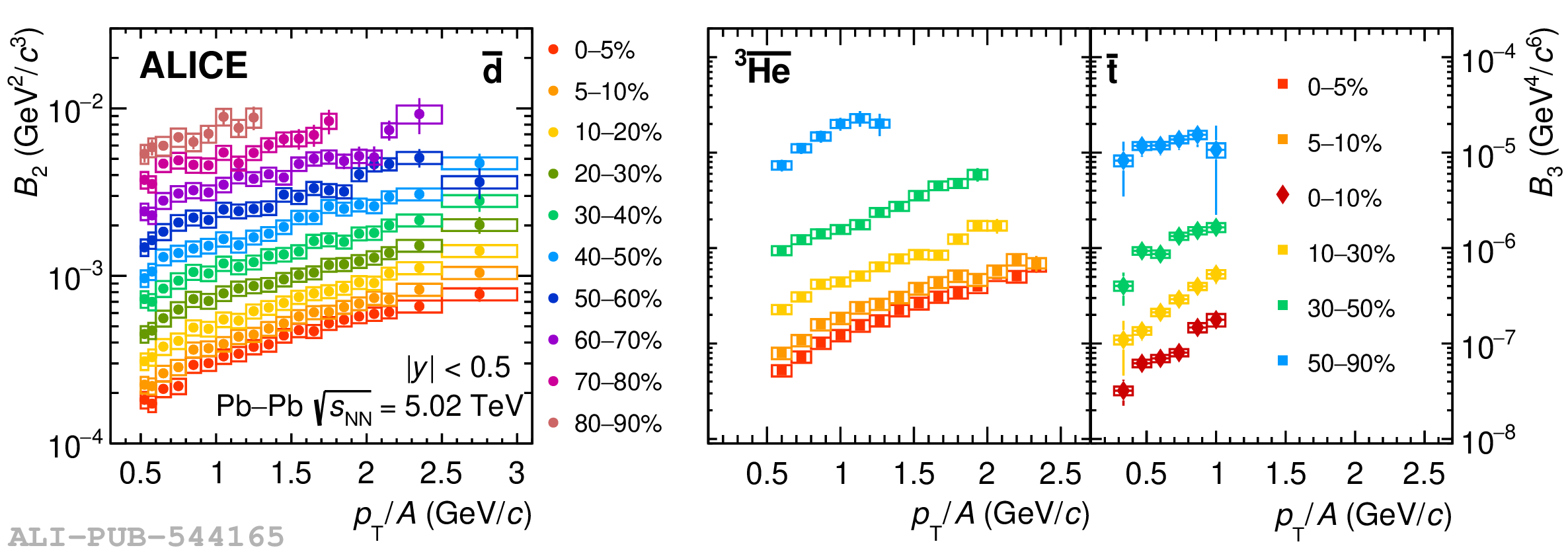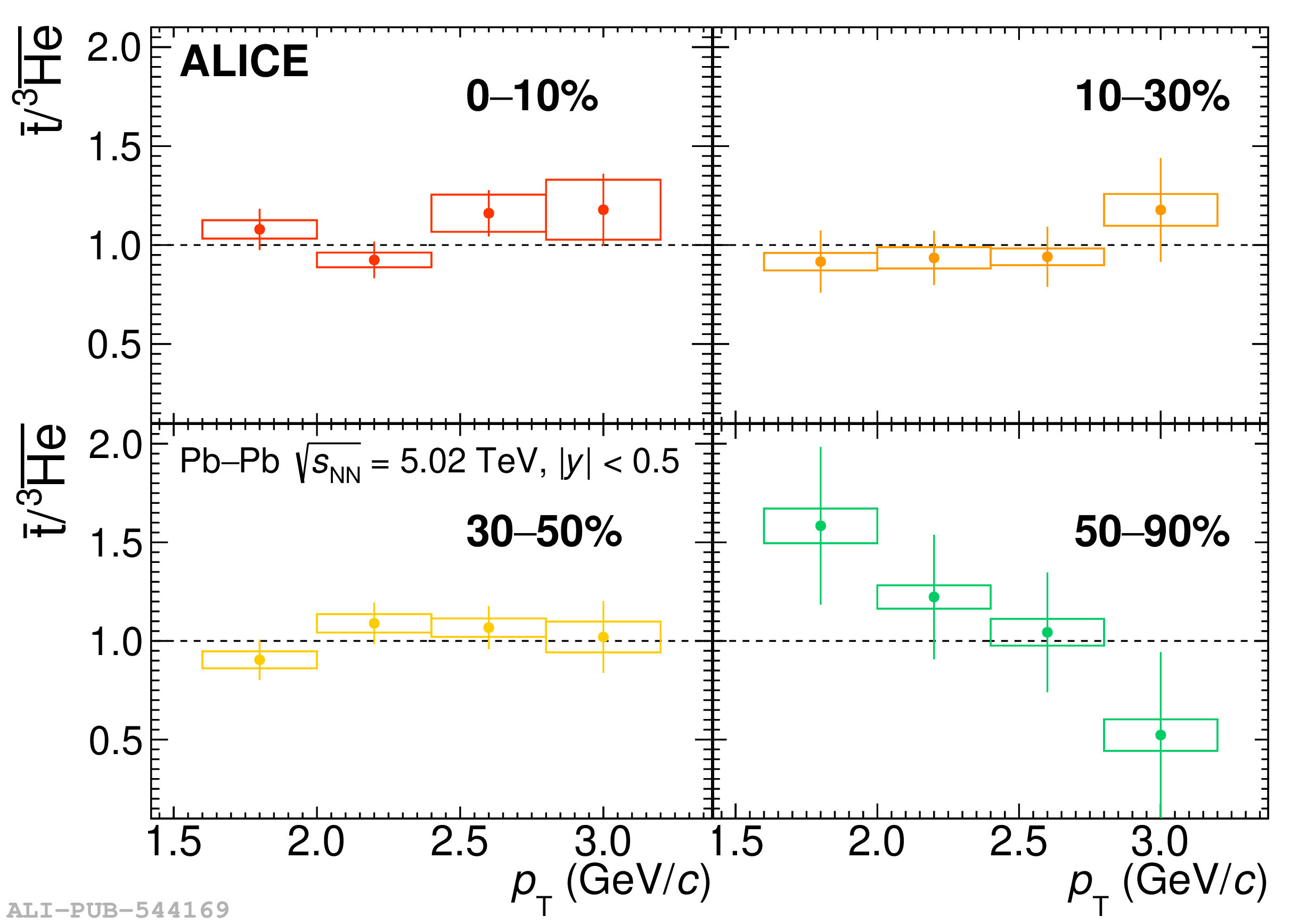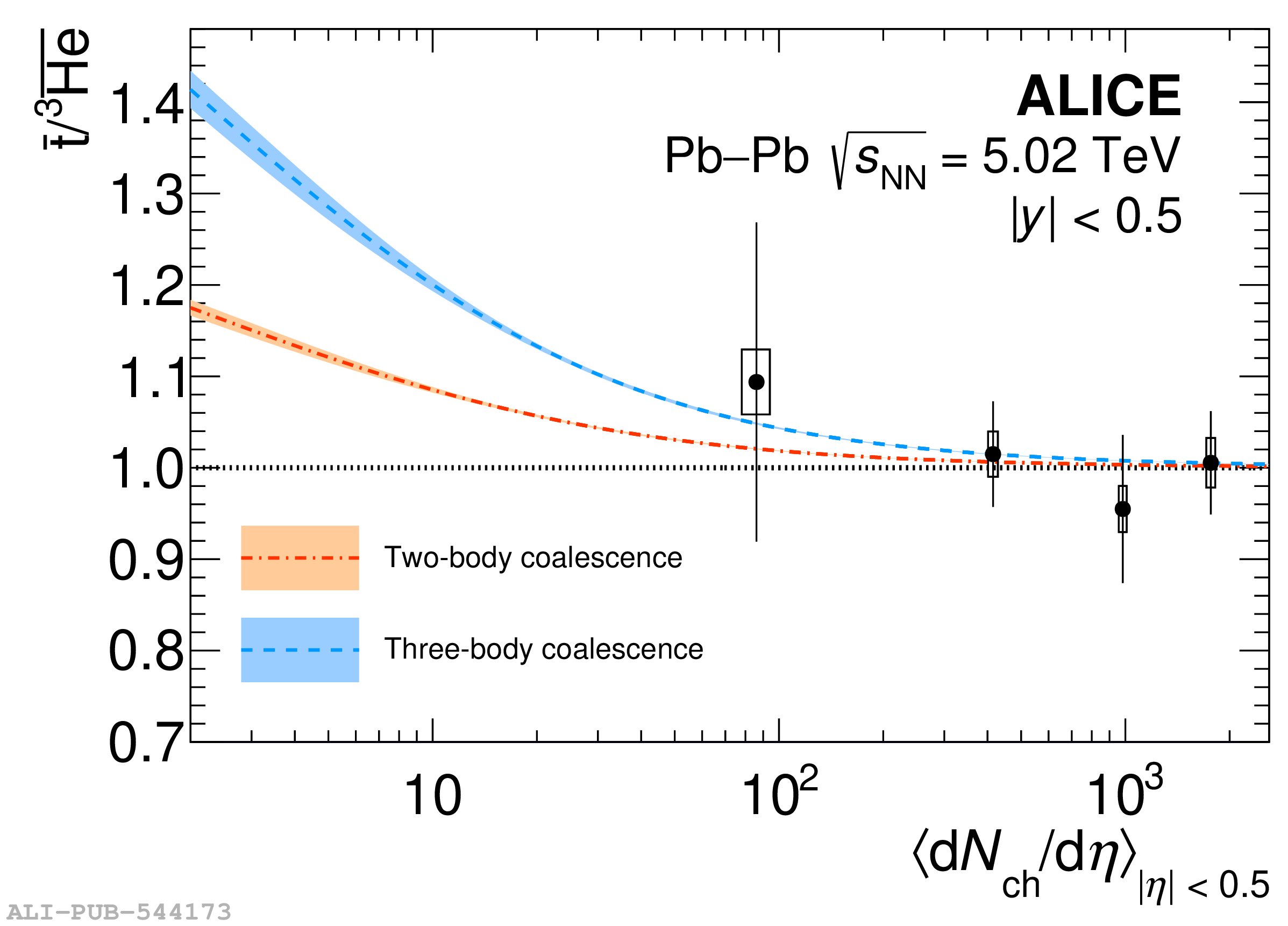The measurement of the production of deuterons, tritons and $^{3}\mathrm{He}$ and their antiparticles in Pb-Pb collisions at $\sqrt{s_{\mathrm{NN}}} = 5.02$ TeV is presented in this article. The measurements are carried out at midrapidity ($|y| <~ $ 0.5) as a function of collision centrality using the ALICE detector. The $p_{\rm T}$-integrated yields, the coalescence parameters and the ratios to protons and antiprotons are reported and compared with nucleosynthesis models. The comparison of these results in different collision systems at different centre-of-mass collision energies reveals a suppression of nucleus production in small systems. In the Statistical Hadronisation Model framework, this can be explained by a small correlation volume where the baryon number is conserved, as already shown in previous fluctuation analyses. However, a different size of the correlation volume is required to describe the proton yields in the same data sets. The coalescence model can describe this suppression by the fact that the wave functions of the nuclei are large and the fireball size starts to become comparable and even much smaller than the actual nucleus at low multiplicities.
Phys. Rev. C 107 (2023) 064904
HEP Data
e-Print: arXiv:2211.14015 | PDF | inSPIRE
CERN-EP-2022-263
Figure group

